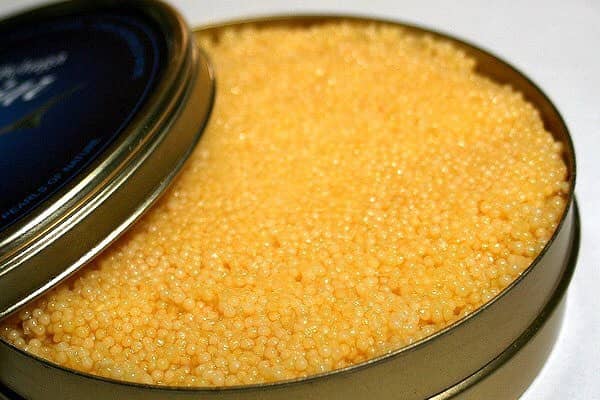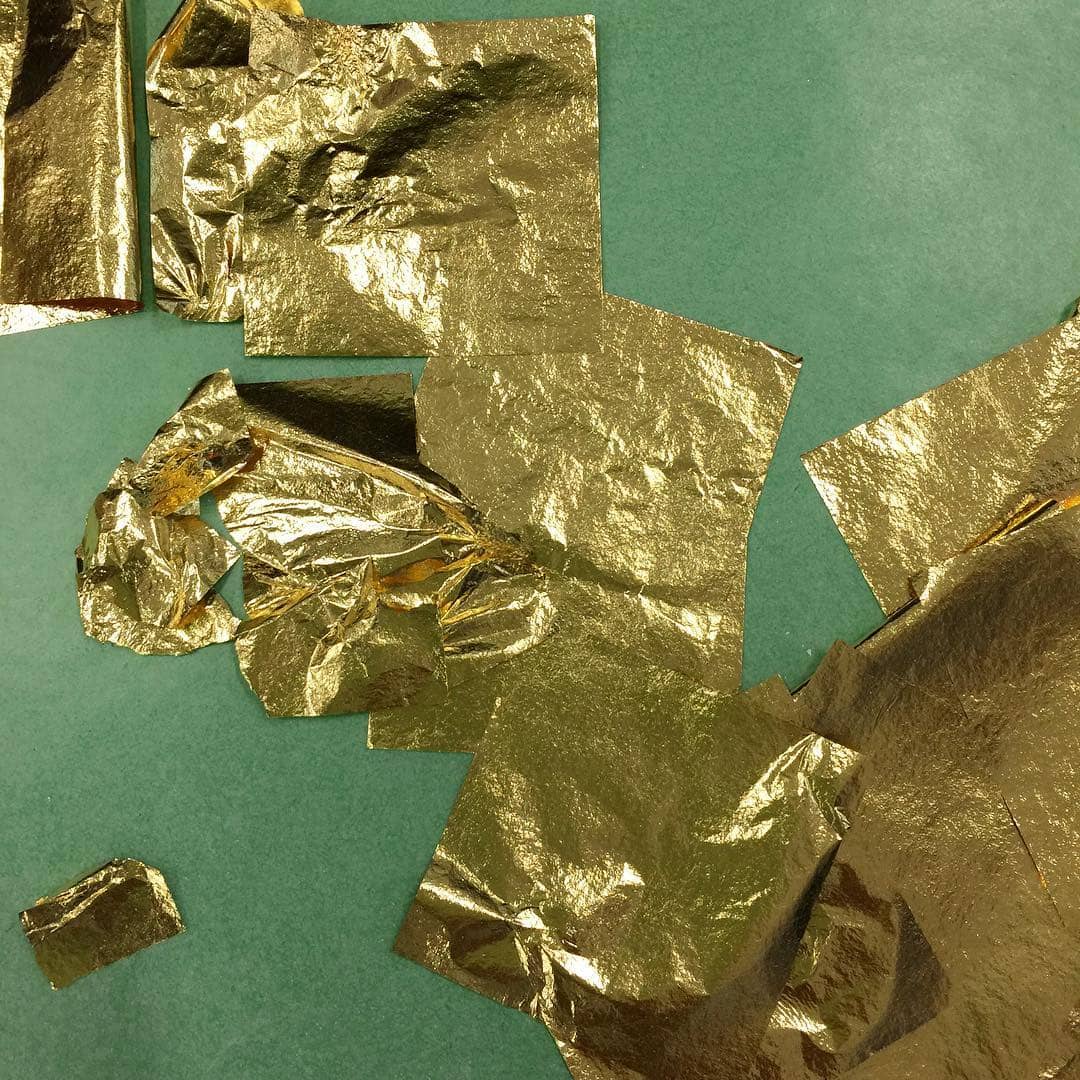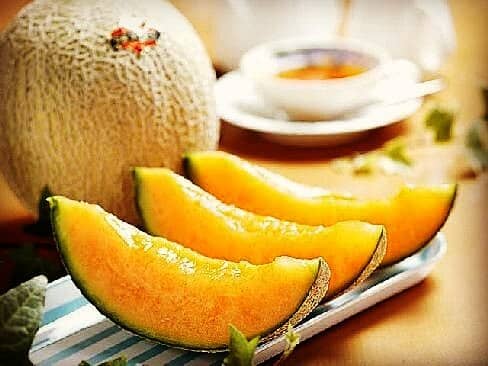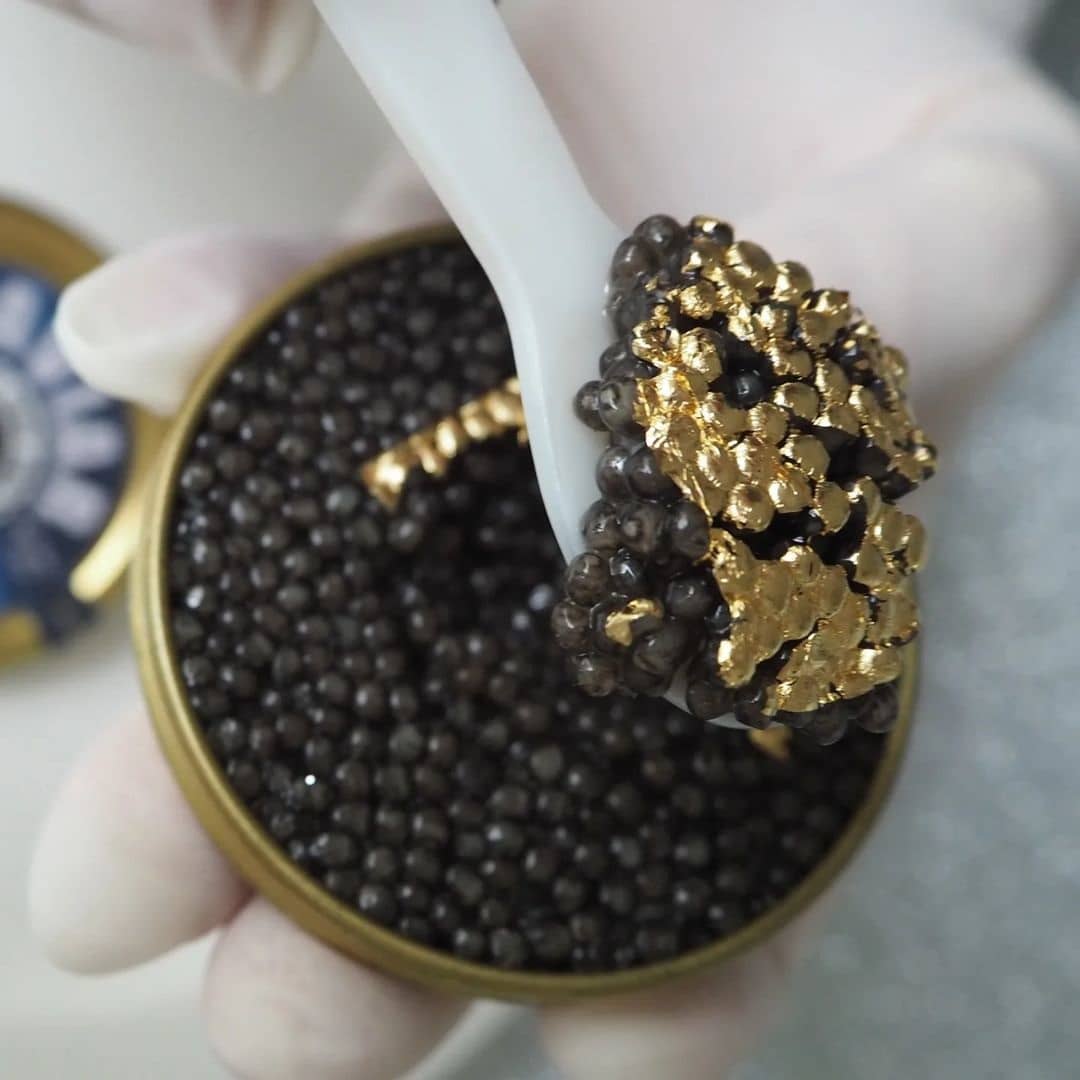Ever wondered what the world’s most luxurious and expensive ingredients are?
Join us as we explore 13 of the most expensive ingredients globally, each with a story that justifies its sky-high price tag.
Get ready to indulge in the world of gourmet extravagance!
1. Almas Caviar (Iran)

Move over, regular caviar! Almas Caviar is the Rolls-Royce of caviars, harvested from rare albino surgeons.
These ancient fish, living in the Caspian Sea, have been aged for 70-100 years. The caviar, which comes in gold tins, costs a staggering $25,000 per kilogram.
That’s right—gold tins. Because if you’re spending that much, why not?
2. Edible Gold

Why settle for basic when you can literally eat gold?
Edible gold is 24-karat and perfectly safe to consume. It’s mostly used as a garnish in fancy desserts and cocktails.
At around $23,000 per kilogram, it’s the kind of luxury that screams, “I’ve made it!” Plus, it’s the only time you can eat your jewelry without weird looks.
3. Yartsa Gunbu Fungus (Tibet)

Meet the fungus that’s more valuable than gold.
This “caterpillar fungus” has mythical medicinal properties, allegedly boosting everything from your energy to your wallet’s weight.
Harvested from the Tibetan Plateau, it’s priced at $20,000 per kilogram. It’s nature’s way of saying, “I dare you to afford me.”
4. Yubari King Melon (Japan)

Forget about the $5 cantaloupes; Yubari King Melons are the Beyoncé of the melon world.
Grown in Hokkaido, Japan, these perfectly round, sweet melons have sold for up to $12,000 each.
They’re often given as lavish gifts, because nothing says “I love you” like a $12,000 fruit.
5. Absheron Saffron (Azerbaijan)

Saffron is expensive, but Absheron Saffron is on another level.
Known for its deep color and aromatic fragrance, it’s harvested painstakingly by hand. It can go for about $11,000 per kilogram.
Fun fact: It takes about 150,000 flowers to produce a single kilogram. So, if you thought your job was tough…
6. Ruby Roman Grapes (Japan)

Ruby Roman Grapes are not your typical supermarket fare. These giant, sweet grapes undergo a rigorous quality control process in Japan.
Only the best of the best make it to market, fetching up to $10,900 per kilogram.
It’s like the grape version of the Oscars—only the elite survive.
7. Red Swiftlet Nest (China)

Made from the saliva of swiftlet birds, these nests are a delicacy in Chinese bird’s nest soup.
Fetching around $10,000 per kilogram, they’re prized for their rarity and texture.
Just think, next time you’re enjoying soup, it could have a $10,000 spit nest in it.
8. Beluga Caviar (Iran)

Beluga Caviar is the OG of luxury foods. These giant sturgeon eggs are known for their creamy texture and exquisite flavor.
Overfishing has made them extremely rare and expensive, at about $8,500 per kilogram.
This caviar is so exclusive that even James Bond would have to think twice.
9. Peri Bali Honey (Turkey)

This isn’t just any honey; it’s the honey.
Collected from the mountains of Turkey, Peri Bali Honey is known for its rich flavor and supposed health benefits.
At $7,000 per kilogram, it’s basically the gold standard of honeys.
10. Alba White Truffle (Italy)

These truffles are the diamonds of the culinary world.
Found only in Italy’s Piedmont region, they’re incredibly difficult to cultivate and are only available for a short season each year.
At $6,000 per kilogram, they’re the definition of rare.
11. Matsutake Mushroom (Japan)

Matsutake Mushrooms are celebrated for their unique aroma and taste. Found in Japan, these mushrooms have a short growing season, making them a rare find.
They can cost up to $2,000 per kilogram, perfect for those who want to add a touch of luxury to their stir-fry.
12. White Swiftlet Nest (China)

Similar to the red variety, these nests are used in high-end Chinese cuisine. Harvested with great difficulty, they are priced at $2,000 per kilogram.
It’s a different kind of bird-watching, one that involves a hefty price tag.
13. Aceto Balsamico Tradizionale (Italy)

This isn’t your average balsamic vinegar.
Aged for decades, this Italian treasure can cost around $1,800 per kilogram.
Each drop is a culmination of years of tradition and flavor, making it worth every cent—if you can afford it.
These ingredients are not merely additions to dishes; they are highlights of centuries-old traditions and extreme culinary endeavors.
The high prices they command are a testament to their exclusivity, quality, and the meticulous efforts required in their production.

